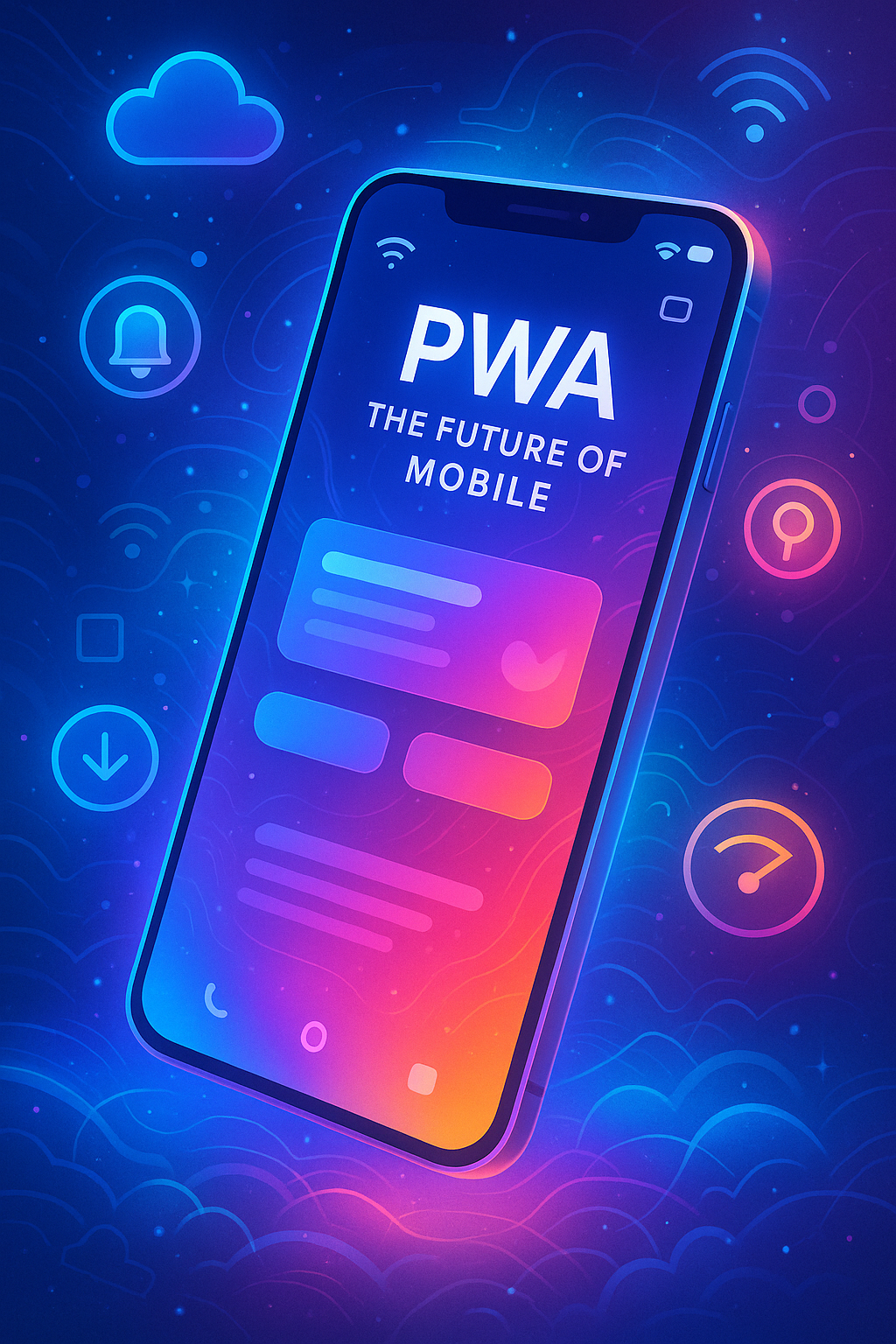As people use their phones more and more, app development is changing . Progressive Web Apps (PWAs) are becoming a strong option instead of regular mobile apps. But what are PWAs , and could they shape the future of mobile? Let’s explain it in simple words.
🔍 What Are Progressive Web Apps (PWAs)?
A Progressive Web App is a kind of website that acts like a mobile app. It runs in your browser, but feels like a normal app you’d get from the App Store or Google Play.
PWAs blend the top qualities of websites and smartphone apps. They load , function without an internet connection, push alerts to users, and can even be added to your home screen—without needing to visit an app store.
⚙️ How Do PWAs Work?
PWAs use cutting-edge web technologies such as:
- Service Workers: Code that runs behind the scenes to store content and enable offline use.
- Web App Manifest: A JSON file that allows users to “install” the PWA on their home screen.
- HTTPS: Guarantees safe data transfer.
- Responsive Design: To ensure the app performs well on all screen sizes.
These tools work together to give users an experience similar to a native app right from their web browser.
📲 Main Advantages of Progressive Web Apps
1. Skip the App Store
You can get or set up a PWA right from your browser—no need to get it from an app store. This makes things easier and quicker for users.
2. Works Without Internet
Even when your internet is bad or not there, PWAs can still work by using saved data.
3. Quick to Load
Because of saved data, PWAs open right away—even on slow networks.
4. Phone Alerts
PWAs can send messages to users just like normal phone apps, to keep them interested.
5. Costs Less to Build
Rather than creating separate apps for iOS and Android, you develop one PWA that functions on all devices.
📉 Things to Keep in Mind
While PWAs pack a punch, they do have a few drawbacks:
- Hardware Access Limits: PWAs can’t yet tap into features like Bluetooth NFC, or some camera controls on all devices.
- Platform Constraints: On iOS, PWAs face more restrictions compared to Android (e.g., no push alerts until ).
- Public Awareness: Many folks still don’t realize they can “install” a website as an app.
🧠 Real-Life Examples of PWAs
Several big-name brands have already put PWAs to good use:
- Twitter Lite: Takes less than 5 seconds to load, uses 70% less data.
- Pinterest: Saw a 40% increase in time spent and a 60% boost in user engagement.
- Forbes: Loads in 2.5 seconds on mobile down from 6.5 seconds.
These success stories prove that PWAs aren’t just a fad—they offer a real solution for better performance and user experience.
🚀 Why PWAs Might Shape the Future
As more people browse on mobile devices and want speed, simplicity, and smooth user experience, PWAs meet all these needs. They:
- Run on all devices and browsers
- Get rid of app store approval headaches
- Cut down on time and costs to develop
- Boost how well apps work and keep users hooked
As browsers get better at supporting them and people get used to this technology, PWAs could become the main way we use mobile apps.
